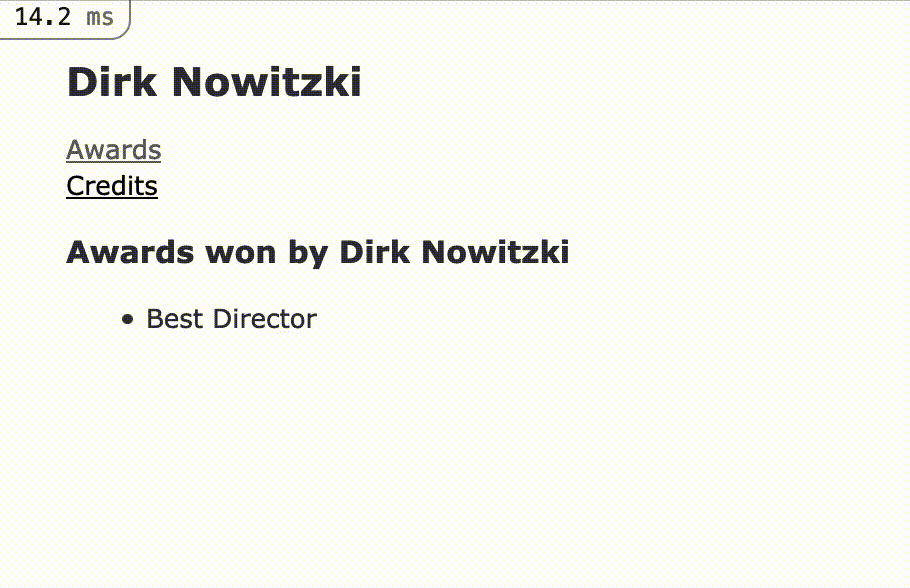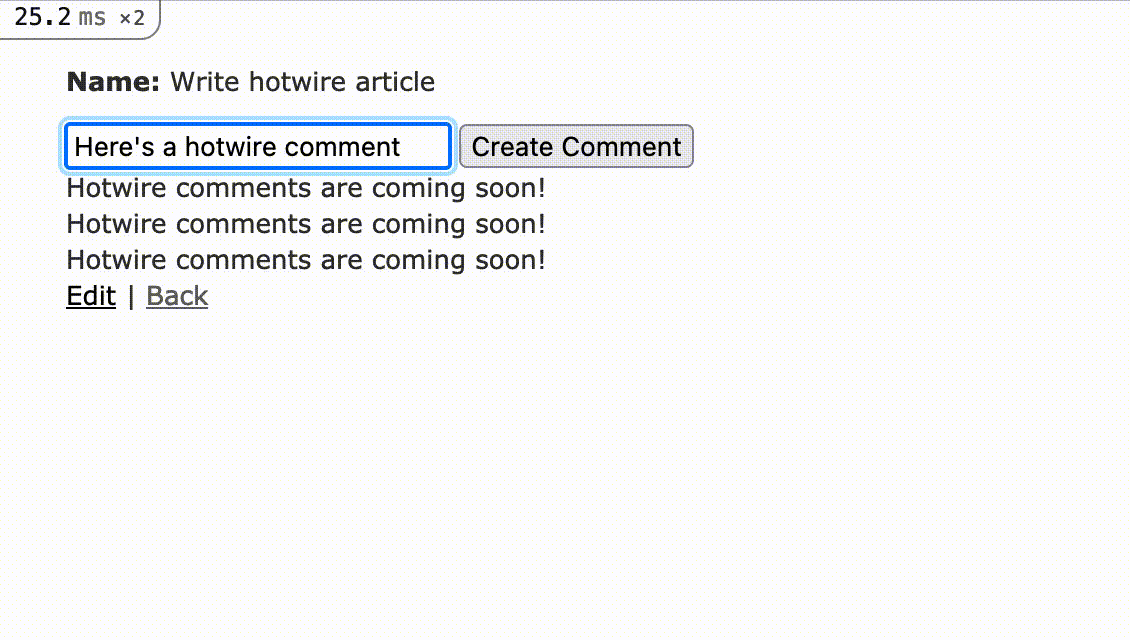01 Jul 2021
Hotwire is a set of tools for building web applications by sending HTML instead of JSON over the wire. Hotwire gives us a framework for making DOM updates without writing much, or any, JavaScript while delivering fast, modern-feeling web applications.
In today’s example, we’re building a interface that remotely retrieves a portion of the page content from an endpoint and replaces a targeted portion of the DOM with the response from the endpoint. We’ll build this without writing any JavaScript and with only minor additions to the standard Rails code you already know how to write.
Here is what it will look like when we are finished. We won’t be focused on styling today but our “tabs” will be fully functional and ready for you to add a nice looking Bootstrap or Tailwind skin.

To accomplish this, we will start with a new Rails 6.1 application, install Hotwire in the application, and then walk through the basics of adding Turbo Drive to our views.
I’m writing this assuming that you are comfortable with the basics of Ruby on Rails development and that you’ve never used Hotwire before.
You can find the complete source code for this tutorial on Github.
Let’s dive in.
Read the rest
11-minute read
24 Jun 2021
Today we’re exploring Hotwire, a new-old way of building web applications by sending HTML instead of JSON over the wire.
We’ll learn how Hotwire works with Ruby on Rails by building a simple application that allows users to leave comments on a project and see those comments in real-time, without requiring full page turns.
This guide presents an alternative approach to a guide I wrote last year which guides you through creating a similar experience using Stimulus. Either approach is valid and works well. The approach presented today presents a way of delivering the experience without writing any JavaScript code, and should feel very natural for any Ruby on Rails developer.
Here is what it will look like when we are finished. It won’t be pretty, but it will work and we won’t write a single line of JavaScript.

To accomplish this, we will start with a new Rails 6.1 application, install Hotwire in the application, and then walk through the basics of adding Hotwire to our views and controllers.
I’m writing this assuming that you are comfortable with the basics of Ruby on Rails development and that you’ve never used Hotwire before.
You can find the complete source code for this tutorial on Github.
Let’s dive in.
Read the rest
15-minute read
06 May 2021
Today we’re building a component that is common but deceptively tricky to get right - a horizontal slider with a position indicator and navigation buttons.
We’ll have a list of items of an arbitrary length, and our slider will allow folks to scroll to see every item in the list. As they scroll, indicators below the slider will update to show which items are visible on the screen. Clicking on the indicators will scroll the corresponding item into view. The whole thing is pretty fancy.
Here’s what it will look like when we’re finished.

To accomplish this, we’ll start with a plain HTML file, pull in Tailwind CSS to make things look nice, and use Stimulus to build interactivity for our position indicators and navigation buttons.
I’m writing this assuming a solid understanding of HTML and CSS, and some level of comfort with JavaScript. If you’ve never seen Tailwind before, some of the classes we add for styling might feel a little odd. You don’t need any knowledge of how Stimulus works, but if you’re brand new you might want to read the Stimulus Handbook to help solidify some concepts.
Let’s dive in.
Read the rest
20-minute read


